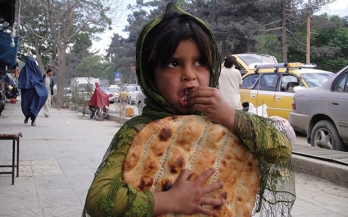The study analysed multiple program design options covering operational complexities, premix supply, the roles of private and public sectors, branding, marketing and advocacy, cost to consumer and quality assurance. This report presents the results of the various options evaluation and key conclusions drawn from the assessment.
This report analyses the cost of fortification of wheat flour in Pakistan, Afghanistan and Kazakhstan, using both Afghan and regional harmonized standards; assesses its impact on market prices of wheat flour for a sustainable fortification program in Afghanistan; and makes recommendations on policy and pricing strategies for domestic and cross-border trade.
This report examines previous large-scale fortification efforts in the Central Asian Republics to ascertain the lessons that can be learned from their successes and failures. The results of the report can help new initiatives ensure better coverage of fortified foods throughout the region including Afghanistan.
This report underlines that in order to move the food fortification agenda forward in Afghanistan and create a supportive environment for action, stakeholders need to understand the impact of fortification, both in terms of health benefits and economic costs.
Micronutrient malnutrition is a major public health problem in Kazakhstan. This Cost Benefit Analysis study looked at the cost-effectiveness of a single intervention, wheat flour fortification, in addressing micronutrient malnutrition.
This is a case study assessment of Chicken Choice, a poultry production and retail business supported by MNF since 2013. Chicken Choise offers small chicken cuts at competitive price points with the aim of making chicken available to lower income groups.
The following report provides a consolidation of the findings, their implications for the achievements of the Marketplace program to date, and a series of recommendations to strengthen the design and potential for impact of the Marketplace moving forward.
This study report presents a costing model that was developed to calculate the total national cost as well as to estimate the probable increment in the retail price of fortifying wheat flour and edible oil produced by large flour mills and edible oil refineries with essential micronutrients, and to determine export price of these products.
This summary report presents outcomes from market research interviews conducted with consumers in Nyanza District on behalf of the Marketplace for Nutritious Foods, Rwanda from December 2015 to January 2016.
In an effort to explore the potential of new food vehicles for large-scale food fortification in West Africa, GAIN took advantage of two FACT surveys conducted in West Africa that measured quality, coverage and/or consumption of mandatorily fortified foods, for exploring the potential of other industry manufactured foods for fortification.










